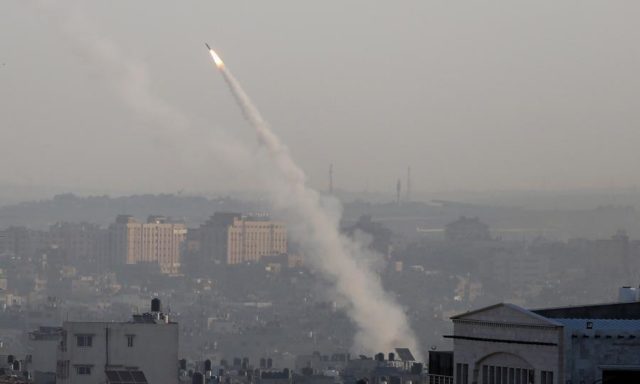
Of the 190 rockets fired, roughly half landed in “open areas” where they didn’t directly threaten populated areas. Of the other half, Iron Dome managed to knock out 90% before they struck targets.
The Islamic-Jihad-Hamas-Iranian rockets are not very accurate. They are suited to be a terror weapon, hoping to create panic in a population, but they are not capable of intentionally hitting any military targets.
Thus, the 190 rockets cannot directly inhibit Israel’s ability to respond militarily. Israel maintains complete air superiority and likely will attempt to quiet the situation by suppressing enemy fire, rather than launch a major – and massive – military operation against Gaza.
No Expanded Operation
The latest outbreak of violence thus does not necessarily mean a general war. Despite Israel’s post-election political maneuvering to create a government in Jerusalem, the primary players – Prime Minister Benjamin “Bibi” Netanyahu and his chief rival, retired general Benjamin “Benny” Gantz – agree on retaliating against Islamic Jihad and its Gaza and Iranian allies, but also agree on not expanding the operation for now.
Nor has the IDF General Staff suggested the need to go beyond the modern Israeli form of containment.
But all this may change if Iran transfers more sophisticated weapons either to Gaza, to Hezbollah in Lebanon, or to Iranian forces in Syria, Lebanon or Iraq. A missile or drone attacks ordered by Iran to be launched from Yemen could also exacerbate the current hostilities.
Most worrisome to Israel’s military is that what happened in Saudi Arabia could happen to Israel. On the night of September 14, two oil installations in Saudi Arabia were attacked by a combination of cruise missiles and a new type of delta-winged UAV.
Uzi Rubin, one of the world’s leading missile defense experts, pointed out that there were 25 air vehicles in all, 18 drones and seven jet-powered cruise missiles. Of the 18 drones, 17 hit their targets (94%), while of the cruise missiles, only four hit their targets (60%).
Precise Targeting
But the most spectacular event, in military terms, was that the drones attacked four large Saudi LNG tanks, hitting them at precisely the same distance from the ground and in precisely the same spot.
This led Rubin to the conclusion that the drones were using infra-red optical homing coupled to image processing algorithms, all based on what the US military calls “scene matching.”
This is new for Iran and has a number of advantages.
First, once programmed it can operate autonomously and does not require a data link or contact with a controller operating some distance away. Counter-drone strategies rely heavily on interfering with drone data links, meaning either to take control of a drone and crash it, or to send it back where it came from.
On August 29, it was reported that an ISIS terrorist was killed by his own drone when it returned home, ostensibly because of a low battery – but it may also have been jammed.
The second advantage is accuracy, so military, economic or political targets can be hit. This is of great concern because, until today, Israel held a very strong lead in precision weapons against an enemy that did not have them. But the Saudi case shows a big change ahead.
Israel has begun to deploy new systems that can counter accurate weapons before they reach Israel’s airspace. David’s Sling, a new air defense system jointly developed by Israel’s Rafael Advanced Defense Systems and by Raytheon, is designed to deal with a wide range of missiles, cruise missiles and drone threats over long distances. The interceptor missiles have a range of more than 186 miles, or 300 kilometers.
David’s Sling is intended to replace the Patriot and Hawk air defense systems using a new type of interceptor missile called Stunner, which features a built-in AESA (Active, Electronically Scanner Array) radar and day/night electro-optical sensors.
Raytheon is adapting the same missile, now called Skyceptor, to modernize Patriot. The first Patriot system with Skyceptor has been purchased by Poland.
Swarming Attack
But, as Israel’s military chiefs know, a swarming attack with precision weapons is a problem that can’t be dealt with entirely through missile defenses, because there are neither enough of them nor is the solution cost-effective.
This means that should Israel’s enemies use these new and accurate drones, or other weapons equipped with similar target aiming capabilities – including long-range cruise missiles and ballistic missiles – it is likely to trigger a general war. From this perspective, it may well be that Iran’s “progress” in its weapons’ accuracy could be its undoing.





